Eye On Apparel: Born In The U.S.A.
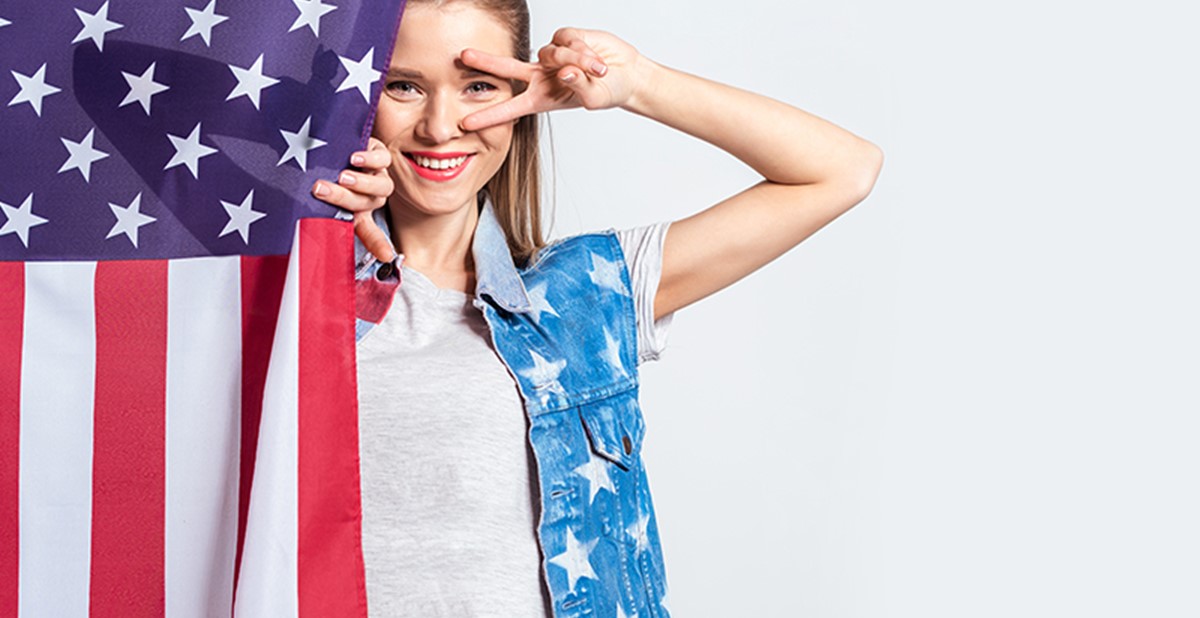
One-hundred percent American-made.” It’s more than just a catchphrase or a sales tactic. Products that carry a “Made in the U.S.A.” label indicate they are manufactured in U.S. factories by American workers. These products play a key role in keeping factory jobs filled and the country’s economy churning. In 2020, nearly 530,000 Americans worked in the U.S. textile industry, according to the National Council of Textile Organization, and U.S. textile and apparel exports that year totaled$ 64.4 billion.
But for many American businesses, especially consumer goods, the U.S. is not the starting point in their products’ supply chain. In 2019, more than 97 percent of the clothing bought, sold and worn by Americans was manufactured overseas, writes Forbes. This means that when the average person opens their closet, most if not all of the clothing tags will indicate their jeans, tees, sweatshirts and pajamas originated elsewhere, the most common sources being China—the world’s largest textile manufacturer and exporter—India, Indonesia, Bangladesh, Cambodia, Vietnam, Sri Lanka and the Philippines. This wasn’t always the case. In the 1960s, when the numbers began to flip, 95 percent of apparel bought, sold and worn in the U.S. was made here, too, according to American Apparel & Footwear Association (AAFA).
The concept of fast fashion is fundamentally what caused American apparel brands to look overseas to source finished products. Emerging in the ’60s and exploding in popularity in the ’90s, and remaining ever-popular today, fast fashion is essentially a way for companies to capitalize off of fast-changing consumer trends and preferences. Through the late 1960s, it was the norm for fashion brands to sell four core collections a year, one for each season, planning well in advance to do so. In contrast, fast fashion operates on a 52-week model, which consists of 52 “micro seasons” each year, allowing for a constant stream of products in up-to-the-minute styles at unbeatably low prices, and vastly outnumbering traditional fashion in terms of the quantity of apparel manufactured and sold.
ZARA, a fast-fashion retailer based in Spain, is seen as a game-changer in this niche. It gained popularity in the 1990s after opening a store in New York City, for running on a 15-day turnaround time for clothing to go from the design room to the retail rack, which was then unheard of—and loved by consumers. Fast forward to the present day and Fashion Nova, a U.S.-based fast-fashion retailer, releases 600 new items every week on its website, and Missguided, a UK-based fast-fashion store, releases 1,000. And with social media becoming ubiquitous, fast-fashion brands benefit from the latest in pop culture and trending social phenomena. Think t-shirts with funny statements inspired by Zoom meetings—“Turn your mic off!”—or social distancing, i.e. “Social Distancing Club” and “Socially Distant.”
The problem was, and continues to be, that fast fashion emphasizes the concept that more is better, which translates to quantity over quality, writes The Wellness Essentials, an online community. Part of the reason is that fast fashion has a reputation for living up to its name; it’s not designed to last very long and is often poorly made. In an episode of the 2019 Netflix series, Patriot Act with Hasan Minjah, a comedian and former Daily Show correspondent, it was noted that the average American buys 68 new clothing items a year—more than one item per week—and that half of these garments aren’t worn more than three times. A similar sentiment was reported by The Wall Street Journal, which stated that of these 68 garments, Americans wear each piece an average of seven times before discarding it. And because of its short lifecycle, fast fashion isn’t sustainable.
American-made apparel brands carry a reputation, too, and that’s for being costlier than imported goods; however, there are many aspects that factor into the cost. For example, in overseas factories, there are different laws that govern workplace practices, compensation and the treatment of workers. In some countries, such as Nigeria, Ecuador and Cambodia, child labor is prevalent, and it’s very possible that a child as young as five years old could have played a part in making the apparel that is exported from there. In the U.S., with its stringent labor laws, companies are aware of the ethical standards that U.S. manufacturers are legally required to uphold, and therefore have a better ability to oversee their supply chain and choose their manufacturing partners accordingly.
Eric Coopman, head of production for Neenah, Wisconsin, supplier Wolfmark Neckwear, Inc., DBA Wolfmark, adds another aspect to consider in terms of domestic versus overseas production. “Overseas production is not always the best option,” he says. “For example, order minimums and turnaround times have to be taken into consideration. We can turn custom-knit beanies or scarves in quantities as low as 25 pieces, in some instances in a few days. When you factor in the current issues with ocean and air freight, having a domestic supplier takes out a lot of uncertainty.”
And a higher price tag may also indicate the garment is made of higher-quality materials; a fact that’s important when producing branded product. “It doesn’t pay to produce a poorly-made product with a corporate customer’s logo. Then you will have the distributor and the end user upset,” says Coopman.
Instead of paying a few dollars for an item that’ll hold up for a handful of wears, distributors can help educate their end buyers on why it’s worth investing a little bit more for something that’ll last for years to come—like a favorite t-shirt that will last a decade. Quality and durability are the hallmarks most companies and organizations want associated with their brand, so the origins of the apparel they are buying are important considerations.
––––––––––––––––––––––––––––––––––––––––––––––––––––––––––––––––––––––––––
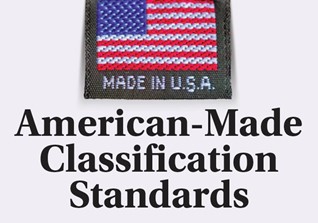
To be considered Made in America, “all or virtually all” of a product and its components must be manufactured in the U.S. using parts that are also manufactured in the U.S., according to the Federal Trade Commission. This means that a product’s main components must be made domestically, and production must take place in the U.S., with only minor components originating elsewhere. When looking at the final product, the near-totality of the product must be identified as U.S.A-made to be considered American-made.
To better understand this, FTC provides several examples, including this one from a company that produces propane barbecue grills at a Nevada plant. The product’s main parts, such as the gas valve, burner and aluminum housing, are all made in the U.S., but the product’s grill knobs and tubing are imported from Mexico. The product is still considered “Made in the U.S” because the knobs and tubing are a miniscule portion of the product’s total manufacturing expenses and in relation to the finished product. On the other hand, a gold ring that is made and manufactured in the U.S. may not be considered American-made if the gold was imported from outside the U.S. Because the raw material (gold) is very close in scope to its finished form (the ring), it would be deceptive to claim it as an American-made product.
Claiming a product is made in the U.S. can be express or implied. Express claims include advertising, labeling or promotional materials that outright state the item is “American-made,” “Made in the U.S.A.,” or simply, “U.S.A.” In some cases, an image of a U.S. flag or the outline of a U.S. map in reference to the manufacturer’s headquarters, may also be used in tandem with other phrases or imagery. Implied claims are made in cases where a company does not outright state a product’s status as “American-made,” but the impression given to customers from advertising, labeling or advertising suggests the product was made in the U.S.
The FTC Act grants the federal agency the power to take action against companies that advertise false or misleading claims about a product’s origins as being made in the U.S.A. When a company claims that a product or products are made in the U.S.A, it should have the necessary information on hand to prove the product’s domestic status.
For more information on the FTC’s guidelines, visit the website here: www.ftc.gov/tips-advice/business-center/advertising-and-marketing/made-in-usa.
––––––––––––––––––––––––––––––––––––––––––––––––––––––––––––––––––––––––––

Everybody needs a pair of crazy socks, and these custom sublimated socks give brands the ability to express their identity—and also their fun side. Made from 100-percent polyester, these socks offer a 360-degree look at a company’s branding. Available in crew and over-the-calf styles in size small (shoe sizes 7-9) to extra-large (sizes 13-16).
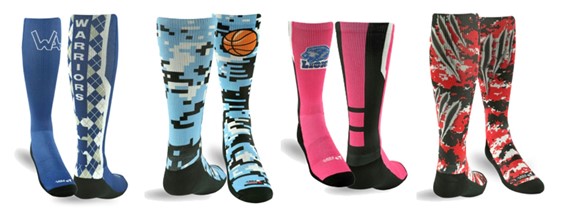
Pro Feet Inc. / PPAI 344751, S1 / www.profeet.com
––––––––––––––––––––––––––––––––––––––––––––––––––––––––––––––––––––––––––
Made by employed refugees in Denver, Colorado, these ties offer full-cover sublimation, coupled with a unique branding moment to add on to employee uniforms, help recognize an event or show support of a cause. Made from recycled polyester twill, this self-tie necktie is available in three lengths (standard, long and extra-long) and three widths (knotty, classic and skinny), as well as three woven tag options.
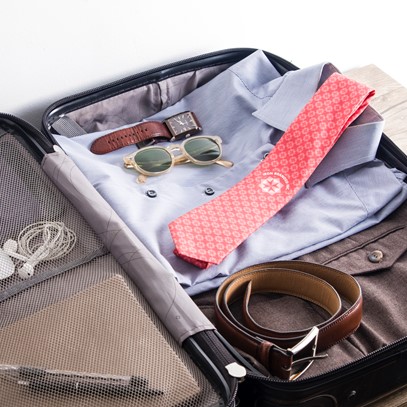
Knotty Tie Co. / PPAI 720849, S1 / www.promo.knottytie.com
––––––––––––––––––––––––––––––––––––––––––––––––––––––––––––––––––––––––––
A fashionable way for employees to represent their companies, or for end users to show support for the brands or causes they love, the Custom Four-Color Process Silk Chiffon Infinity Scarf is a U.S.A.-made product that’s sure to please recipients. Made from a blend of 80-percent cotton and 20-percent silk in an infinity style, the scarves are sized at 25 inches by 60 inches and any image can be imprinted.
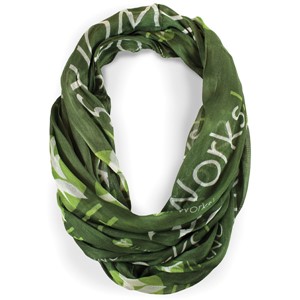
Wolfmark / PPAI 114140, S3 / www.wolfmarkties.com
––––––––––––––––––––––––––––––––––––––––––––––––––––––––––––––––––––––––––
It’s nothing but options with the Custom Beanie with Cuff and Pom. With a selection of 30 yarn colors, and a few beanie styles, brands can ensure this product accurately conveys their style. Made in the U.S.A. from 100-percent acrylic yarn, the beanie is also industrial-steamed to ensure a smooth finish.
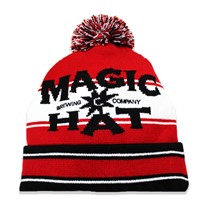
Wolfmark / PPAI 114140, S3 / www.wolfmarkties.com
––––––––––––––––––––––––––––––––––––––––––––––––––––––––––––––––––––––––––
Part of the Prism Collection featuring products in new halftone colors, the Unisex Heather CVC Short Sleeve Tee is a recipient favorite. Made from a blend of 99-percent Airlume-combed and ring-spun cotton and one-percent polyester, with slight fabric variations based on color and finish, this 4.2-ounce tee features a crew neck and side seams in a retail fit. It’s also manufactured at the supplier’s Los Angeles facility, where it employs more than 1,000 U.S. workers. Available in XS-5XL in 55 stunning colors, shown in heather magenta.
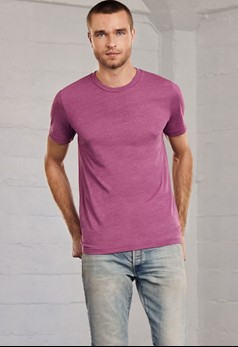
BELLA + CANVAS / PPAI 304892, S6 / www.bellacanvas.com
––––––––––––––––––––––––––––––––––––––––––––––––––––––––––––––––––––––––––
Offering wearers a flattering, draped fit, the Women’s Flowy Side Slit Tank is an easy wear, grab-and-go option. Featuring stylish accents, including side slits and side seams, a scoop neck and a high-to-low, rounded hem, the 3.7-ounce tank is made from blend of 65-percent polyester and 35-percent viscose, with variations for heather and slub colors. Available in S-2XL in 10 colors, shown in heather navy.
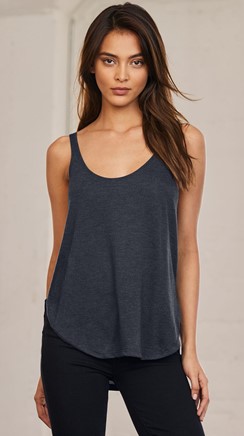
BELLA + CANVAS / PPAI 304892, S6 / www.bellacanvas.com
––––––––––––––––––––––––––––––––––––––––––––––––––––––––––––––––––––––––––
The Winter Gift Pack Premium Knit Scarf and Beanie is a great way to show support for a school or favorite team. The Knit Beanie with Cuff & Pom Pom, made from woven acrylic in one-size-fits-most, can have up to three colors integrated into its design. The Knitted Stadium Scarf, which measures 53 inches long and 6.5 inches wide, including its fringe, is also made from 100-percent acrylic, and offers a two-sided knitted imprint location in up to four colors. Made in the U.S.A., each set is individually polybagged. Choose from a selection of nearly 50 stock colors, shown in olive and light pink.
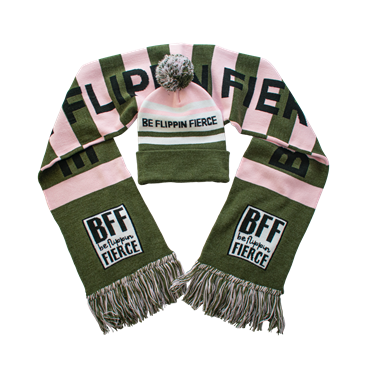
BamBams / PPAI 255565, S9 / www.bambams.com
––––––––––––––––––––––––––––––––––––––––––––––––––––––––––––––––––––––––––
Offered fittingly in a patriotic color scheme, the American-made Unisex Americana Raglan Baseball Shirt combines a blend of 50-percent combed and ring-spun cotton, and 50-percent polyester. The 4.4-ounce shirt features a raglan style three-quarter sleeve, along with side seams, a rounded bottom and a satin label. Available in XS-2XL, this shirt is a stylish choice for sports teams, and a great way for a brand to convey a sporty vibe.
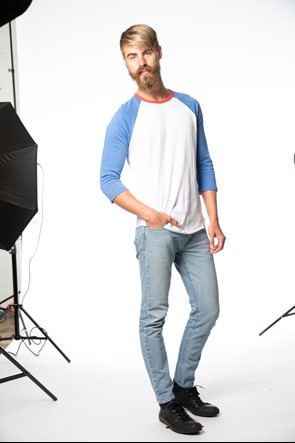
Royal Apparel / PPAI 269959, S1 / www.royalapparel.net
––––––––––––––––––––––––––––––––––––––––––––––––––––––––––––––––––––––––––
The Women’s Fashion Fleece Crop is a stylish take on the traditional sweatshirt. Made from a blend of 50-percent combed and ring-spun cotton and 50-percent polyester, this 7.4-ounce fleece is heavyweight and features set-on rib sleeve cuffs, a raw bottom opening, side seams and a tearaway label. Made in the U.S.A., it’s available in sizes XS-XL in six colors, shown in red.
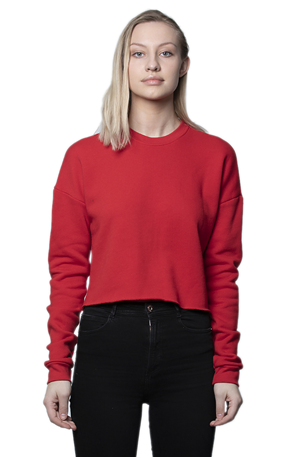
Royal Apparel / PPAI 269959, S1 / www.royalapparel.net
––––––––––––––––––––––––––––––––––––––––––––––––––––––––––––––––––––––––––
The RKP12 beanie is a cool way to showcase clients’ logos or branding, while keeping wearers warm and cozy. This plaid-knit beanie with a solid cuff is made in the U.S.A. in Cap America’s Fredrickson, Missouri, factory, and is kept in stock for a fast and convenient three-day turn time after sample approval. Made from 100-percent acrylic yarn, clients can opt to have their logo embroidered, or they can add a trendy patch. Available in four colors—dark heather/black, true royal/black, white/black and true red/black (shown)—with the option to add a pom on top or a faux fur pom, the latter of which is imported.
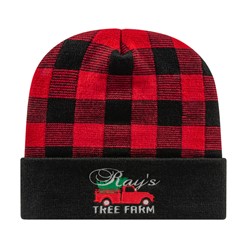
Cap America, Inc. / PPAI 111597, S10 / www.capamerica.com
––––––––––––––––––––––––––––––––––––––––––––––––––––––––––––––––––––––––––
Made from 100-percent double-knit interlock polyester, this fully-sublimated polo golf shirt is treated with the supplier’s strongest antimicrobial coating of silver and copper. It also features UPF40 protection, blocking more than 97 percent of all UV rays, and each shirt is cut, printed and sewn to prevent creasing. Made in Los Angeles and guaranteed to last through 100 washes, it’s available in sizes S-XL.
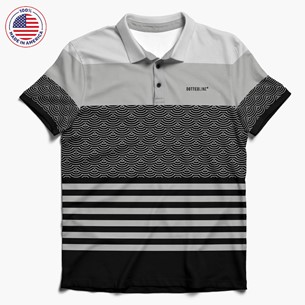
JDMFG, LLC, DBA Dotted Line Manufacturing / PPAI 790748, S4 / www.dottedlinemfg.com
––––––––––––––––––––––––––––––––––––––––––––––––––––––––––––––––––––––––––
This U.S.A.-made premium face mask features UPF 50 sun protection for wearers but promises a zero-fade print to also protect branding. Made from 100-percent interlock polyester, this 4.7-ounce mask is also moisture-wicking, keeping wearers dry, and features an antimicrobial coating. Reusable and re-washable, it’s treated with copper and silver, which is known to kill 99.9 percent of microbes, including viruses.
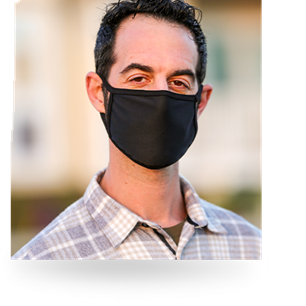
JDMFG, LLC, DBA Dotted Line Manufacturing / PPAI 790748, S4 / www.dottedlinemfg.com
––––––––––––––––––––––––––––––––––––––––––––––––––––––––––––––––––––––––––
Danielle Renda is associate editor of PPB.

